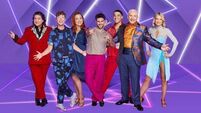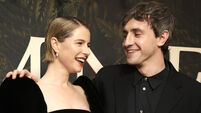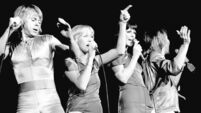Slane 1985: Magic memories of Bruce Springsteen's first ever gig in Ireland

Bruce Springsteen performs on stage at Slane in 1985.
Everybody who saw Bruce Springsteen at Slane Castle on Saturday, June 1, 1985, immediately mentions the weather. It was a day for saving hay – of blue skies and sunshine.
There was exuberance in the air. Ireland was killing it in sport at the time. Dennis Taylor had just won the World Snooker Championship in dramatic fashion. Barry McGuigan was about to become a world boxing champ. U2 played their first Croke Park gig at the end of June, but first there was “The Boss” in the Boyne Valley. It turned out to be a memorable day.
“It was like the concert you would design,” says Fiona Looney, who was an 18-year-old putting down her first week as a cub reporter for Hot Press magazine. “If you asked a teenager – like I was – to write an essay about your dream concert, it would have described the goings-on that day. The planets aligned – the weather was stunning. I’d been to lots of live gigs before then."
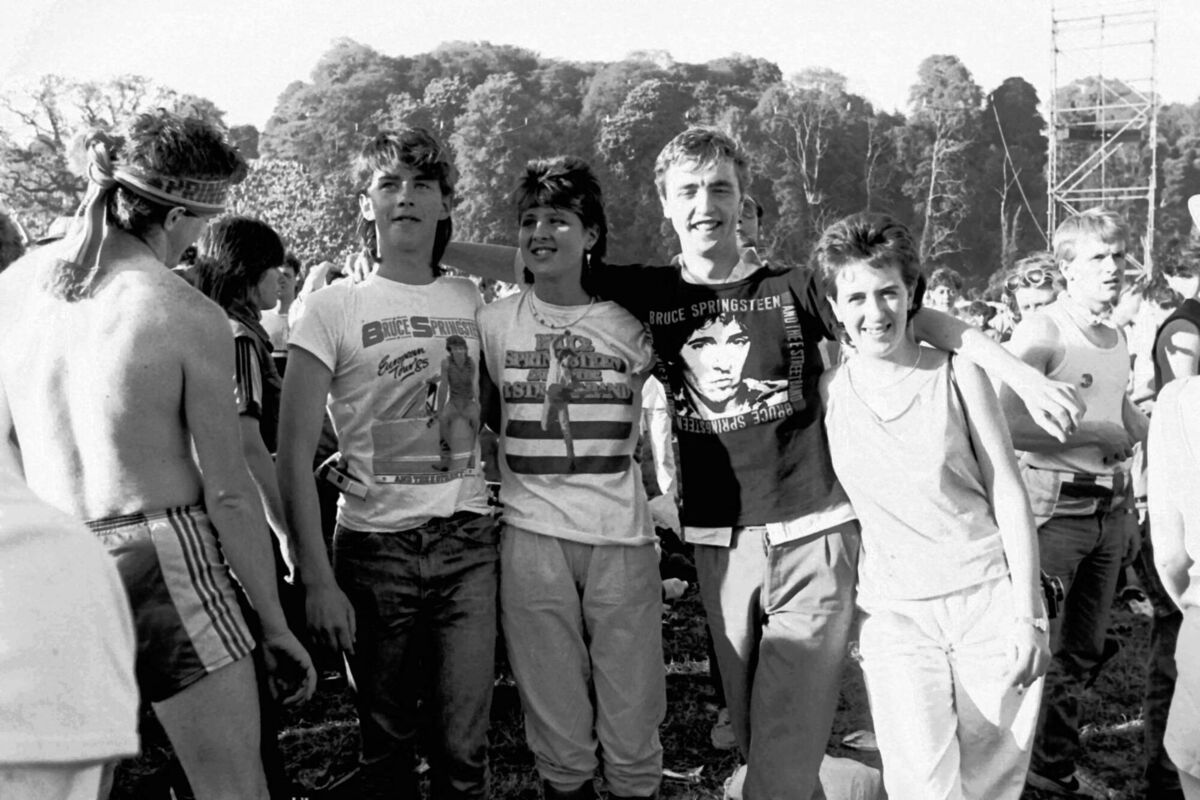
Looney had been to Bob Dylan the year before and hadn't enjoyed the experience. "This was different. I remember the atmosphere being very, very mellow. There was a lovely vibe. It was the first time I was in a large arena where everybody brought the best version of themselves. It was the first time I’d ever seen girls in bikini tops on top of boys’ shoulders. The video screens on stage were a novelty for us. It was a game changer.”
For promoter Jim Aiken - the late father of Peter Aiken, who is organising the 2023 gigs at the RDS - the pleasant atmosphere and success of the gig was a great relief. The previous year's Bob Dylan concert had been overshadowed by a riot, and some objections had been raised to further events at the site.
Fr Brian D’Arcy was at the concert in a “working” capacity. Jim Aiken, asked him to be on site to say mass for the crew as they set up.
“We had great craic there,” says D’Arcy. “A lot of the record company guys were chatting a few days earlier. They were asking Chris Roche, Jim Aiken’s publicity agent, ‘Have you any spare tickets for the press, Chris?’ He said, ‘Come to the gate and give me a shout. I’ll let you in.’
"He said that so often, for all the gigs. He was true to his word but the problem was could you get him when you got to the gate? You might have to wait a long time. I said to Chris: ‘You know, when you get to heaven, do the same. Send for me at the gate and I’ll get you in.’ That got a good laugh.”
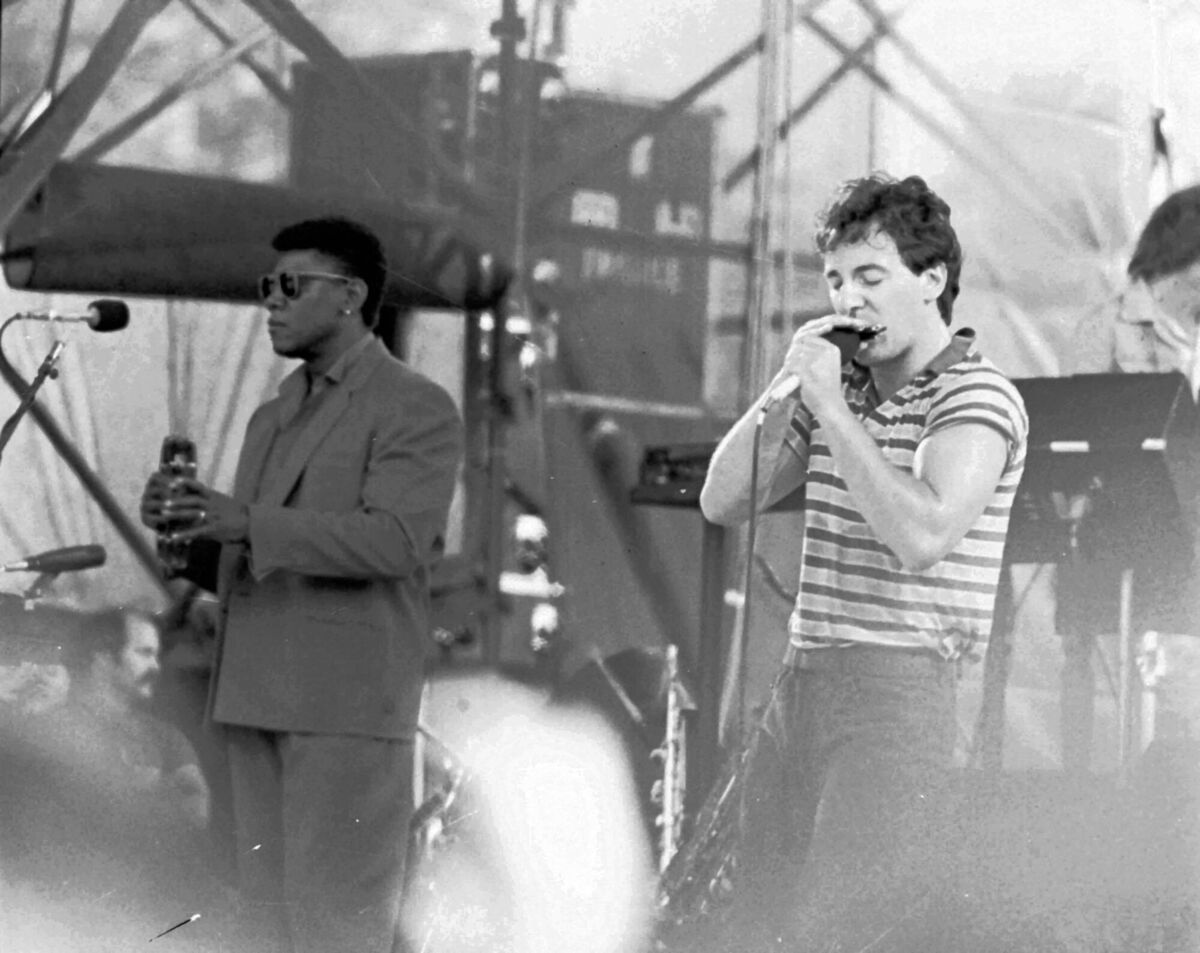
Tickets, which were selling at £15 face value, were in hot demand. The promoters issued 65,000 tickets and released 4,000 extra tickets three hours before the concert began, due to demand.
Some press estimates – and Bruce Springsteen’s memoir – put the attendance at even greater numbers. The crowd was certainly bigger than, say, that year’s All-Ireland finals or U2’s gig at Croke Park a few weeks later.
“It was the start of big concerts in Ireland,” says photographer Eddie O’Hare. “It was a new era completely, beginning I guess with the Rolling Stones concert at Slane Castle in 1982, but the scale of the Bruce Springsteen concert was bigger. It was probably the biggest Irish crowd at an event since the Papal visit in 1979."
O'Hare remembers the good humour of the crowd and the generally happy atmosphere. "It was easy for me as a photographer to mix among the fans, to listen out for accents, to get within almost arms’ reach of the stage. I remember people with American flags and colours.”
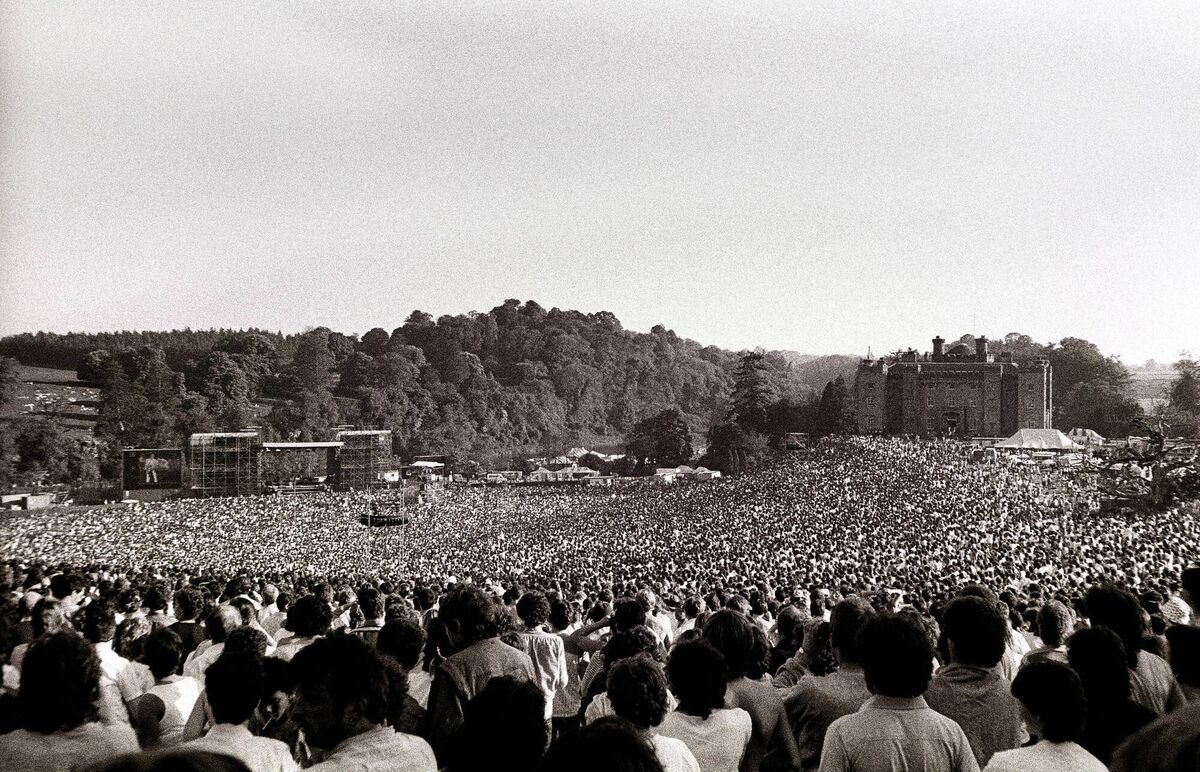
There were several international celebrities in the audience, recalls Dave Fanning. Music titans such as Eric Clapton, Pete Townshend and Elvis Costello mingled in the VIP area.
“You could easily imagine Clapton looking at the stage or Townshend checking it out for The Who to play there," says Fanning. "Or maybe it was their day off. They were invited over. Have a few pints. Enjoy the day. Ireland was really on the map at that stage. We were almost getting blasé about these gigs. I remember in August that summer we put U2 on the back of a truck in the Lee Fields in Cork.”
The gig was the first leg of Springsteen’s European Tour. Traders on the ground did good business. A baked potato with coleslaw cost £1. Posters of The Boss went for £1.50. Youngsters necked back flagons of cider while Irish celebrities like PJ Mara, who was famous for being Charlie Haughey’s key advisor, drank back champagne from a plastic pint glass; sheltering from the sunshine in a Marlboro hat, he chewed on a cigar, too. Teetotal Gay Byrne was photographed amongst the revellers in sunglasses.
“Whatever number of people were there, it was an awfully big hill full of people,” says Fr D’Arcy. “People came from all over the country, including Northern Ireland. They had waited a long time for him to come on stage. I’m sure a lot of them were inebriated, but even though it was a raucous concert there was no raucous behaviour really. They were all part of Bruce Springsteen’s discipleship and his message."
D'Arcy recalls an eclectic mix of people at the gig. "I got the impression he wasn’t just the working man’s prophet, but he was also the wannabee’s prophet, the businessman’s prophet. Well-dressed people and money people were all there that day. They were all Bruce Springsteen fans. You can be sure when they went into their office on Monday morning they didn’t let it be known they were at a head-bangers concert like that.”
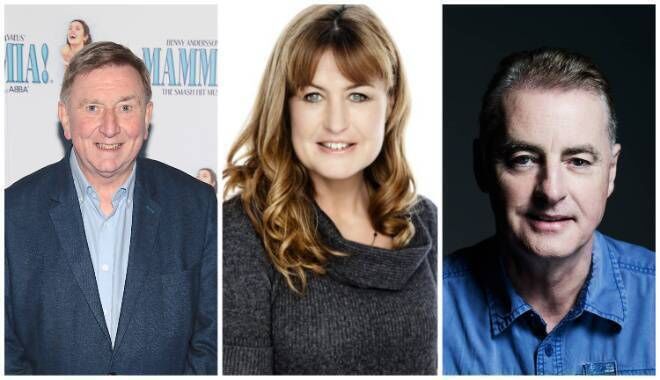
The roads weaving into the venue were lined with fans arriving late to the gig. When Springsteen stepped on stage with the E Street Band shortly after 5 o’clock and started blasting out the lyrics for 'Born in the USA', the title track of his latest album, those who were walking started to run towards the entrance of the castle grounds. Some sang along jokingly: “Born in the Ro-tunda!”
“The thing about Bruce Springsteen is that he was extremely popular that year,” says Looney. “When 'Born in the USA' came out it was a huge hit around the world, particularly in Ireland. The video of it got played a lot on MT-USA, the RTÉ music television programme presented by Vincent Hanley. The album was already iconic before the gig. Everyone knew it."
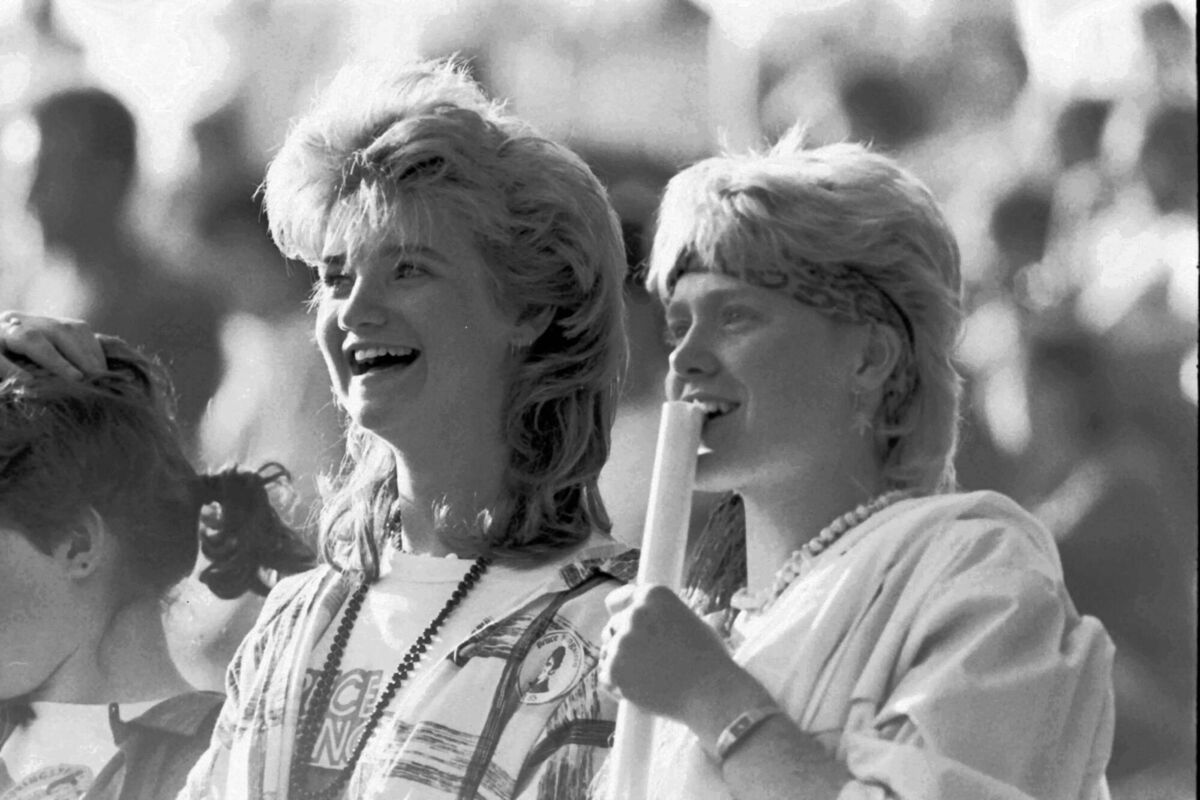
Being Springsteen's first gig in Ireland, and the fact that the internet hadn't yet arrived, the crowd didn't quite realise the treat awaiting them. "What nobody expected was that once he came on stage, he didn’t leave again. He went on and on," says Looney. "It was unbelievable – the energy of the man. He was tireless. He seemed to be having a really good time. He strikes you as a man who thoroughly enjoys performing. There’s no fakery about him.”
Fanning wasn’t totally sold, however, and is a rare veteran of that gig to be seduced ever since. “If you look at the 10 reasons why you like an artist there’s no doubt Bruce is the one guy who nearly ticks every box and yet I almost don’t like him. I don’t get his appeal. I understand it, but his music is not for me. He’s good at what he does, but some of his music is like skipping rope for kids. Dylan could sing some dreadful songs. He’s got about 200 of them, but I still think he’s God, but I don’t get it with Bruce.”
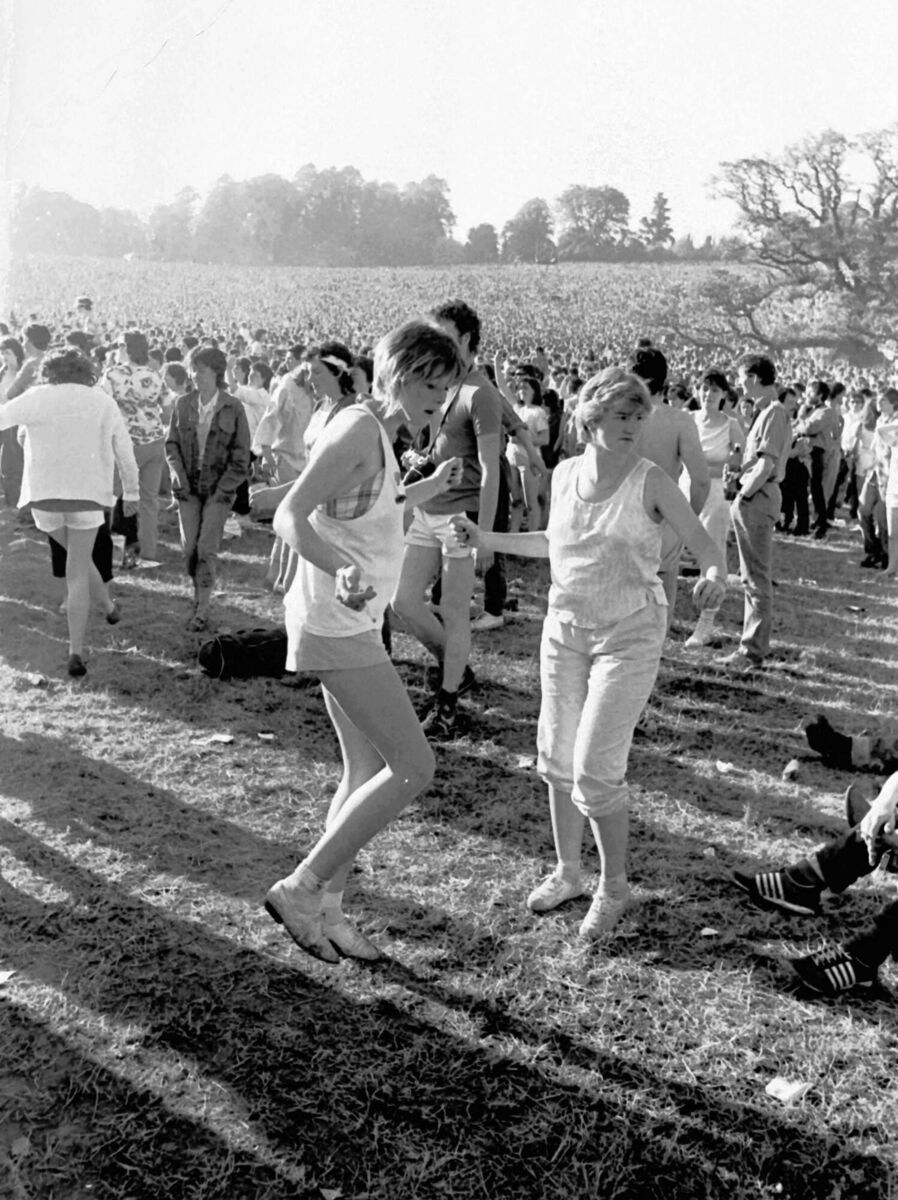
Springsteen’s fans at Slane Castle that evening couldn’t get enough of him, though, as he stormed through his biggest hits, including 'The River', 'Dancing in the Dark' and 'Rosalita'.
He announced to the crowd at one stage that his grandmother was Irish, which got a roar of approval. In fact, his great-great-grandmother left Ireland as a 14-year-old in 1852, along with her two younger sisters. Springsteen also took time to celebrate his legendary saxophone player Clarence Clemons, describing him as “Lord of the Universe”; Clemons was dressed in a red suit.
'Born to Run', which he performed during his encore, got the biggest crowd reaction of the gig. He concluded his three-and-a-half-hour set, which included a half-hour intermission, with a medley of Twist and Shout and Do You Love Me? Interjecting at one stage, he asked: “Ladies and gentlemen, all of you Irish people out there! Do you love me?”
He was pushing an open door. The response back to him from the crowd was adamant: “Yeah!” “The song that evening that really resonated with me – and made me go, ohmigod this is amazing – was I’m On Fire,” says Looney. “He gave a gorgeous performance of it. Very raw. It was a torch-song performance that you would expect to hear in a little underground club with 10 people. You don’t expect to get that kind of intimacy with, say, 80,000 people in a huge natural amphitheatre like Slane. It was very special.”
- Bruce Springsteen will perform at Dublin’s RDS Arena, May 5, 7 & 9
Bruce Springsteen’s concert at Slane Castle fell three days after the Heysel Stadium disaster in which 39 football fans were crushed to death at the European Cup final in Brussels. Springsteen had never played to an audience as big before, and the way in which the crowd swayed in front of him like a choppy ocean sea unnerved him.
“I thought somebody was going to get killed and it’d be my fault. The crowd closest to the stage… were deeply into their Guinness and dangerously swaying from left to right. They were opening up gaping holes amongst themselves as audience members by the dozens fell to the muddy ground, vanishing for unbearable seconds ’til righted once again by their neighbours,” he wrote in his memoir, Born To Run, which was published in 2016.
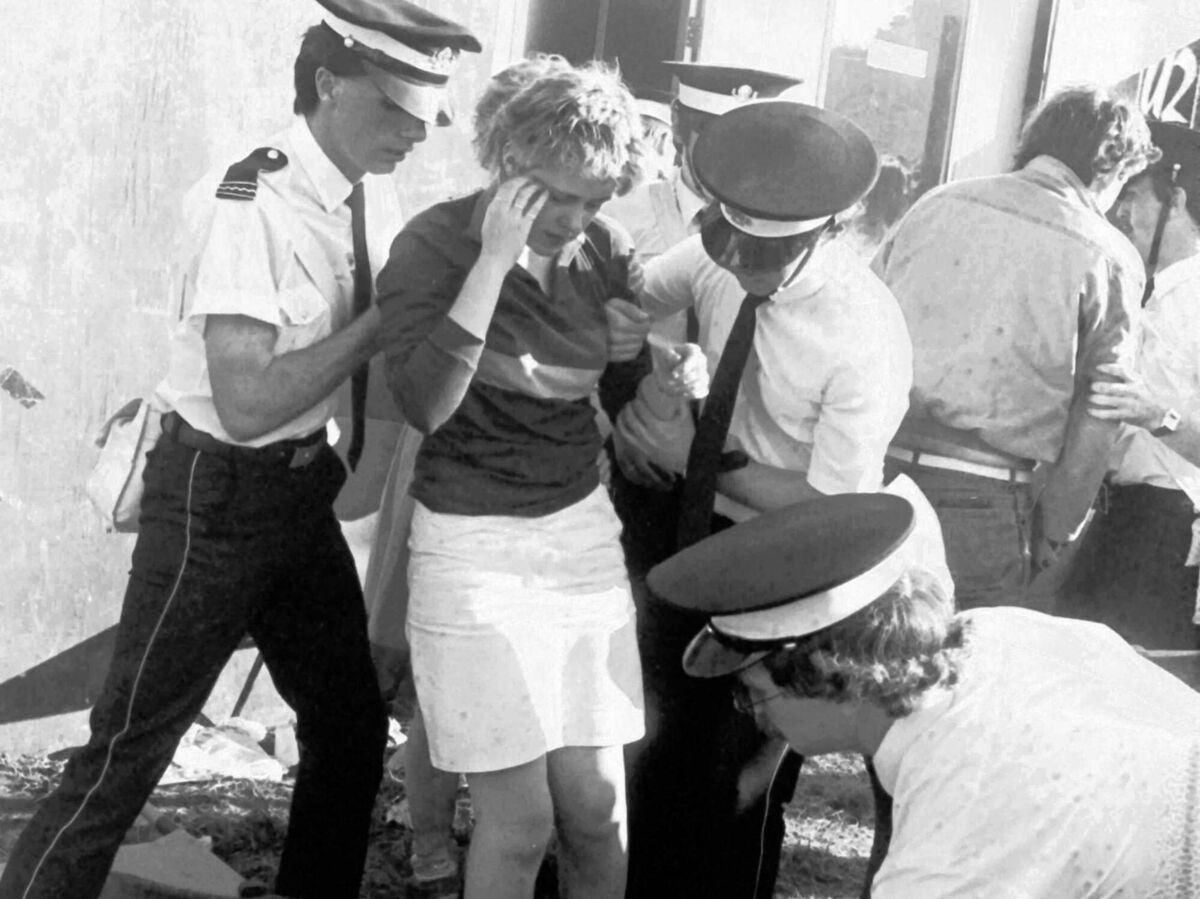
Springsteen was so worried someone might die at one of his stage shows that he considered pulling the plug on the rest of his European tour. He couldn’t face the same anxiety every night at other gigs. He changed his mind at the interval, however, reassuring himself that his fans were all looking out for each other.
“The crowd settled during the second half of the Slane show and I observed there was a sketchy but ritual orderliness to what appeared from the stage to be pure chaos,” he wrote. “The crowd protected one another. If you fell, the nearest person to your left or right reached down, grabbed an arm and pulled you upright.”
On the day, St John’s Ambulance Brigade dealt with 400 cases, the majority due to fainting, sunburn, cuts and bruises; 35 people were taken to hospital, but given the heat and the huge numbers at the gig the day passed off without serious incident.
After the gig finished, as a Garda message playing out over the loudspeakers thanking the crowd for behaving so well, the concert promoter Jim Aiken chimed in: “Youse have been absolutely wonderful.”
